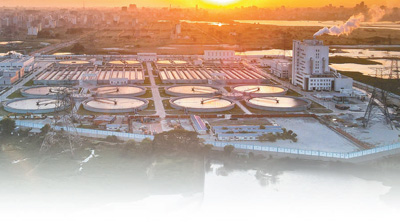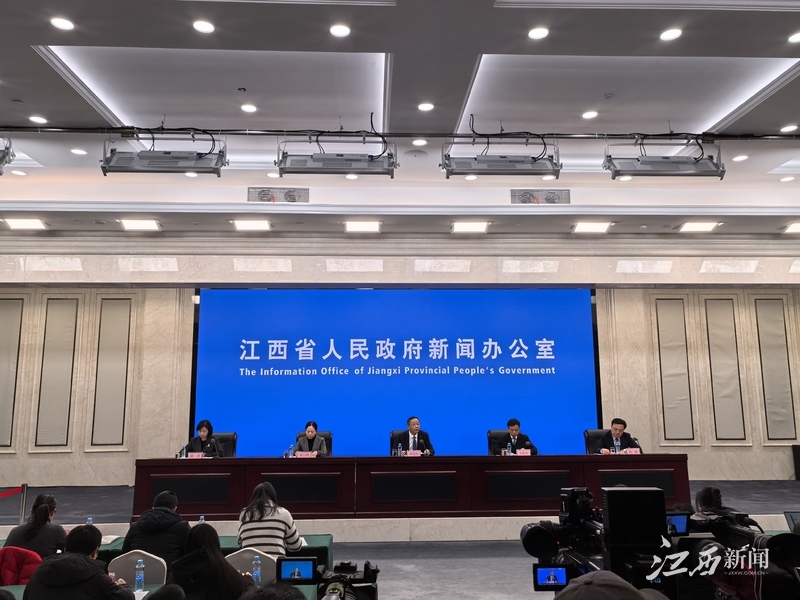Xinjiang Received 3.47 Trillion Yuan In Investment! This "sky-defying" City Is Rewriting China's Economic Map
Xinjiang Received 3.47 Trillion Yuan In Investment! This "sky-defying" City Is Rewriting China's Economic Map
Especially for the artificial intelligence (AI) industry, its development requires the construction of a large number of high-energy computing power centers. With its sufficient energy and vast space, Xinjiang has become an ideal place to carry these cornerstones of the future digital economy.
While the whole country is still surfing the prosperity of the eastern coast, the vast land of northwest China is undergoing a shocking transformation. A huge investment of up to 3.47 trillion yuan, which is equivalent to 1.5 times the GDP of Xinjiang and three times the investment amount of Jakarta-Bandung High-speed Railway, is like a surging force, injecting into this land carrying heavy history and unlimited potential.
By 2025, Xinjiang will shock the national gaze with its remarkable development momentum. Its net population inflow has jumped to the third place in the country, and private investment has soared with an astonishing growth rate of 23.2%, and the vigorous development of import and export trade is also among the top in the country. The world-renowned international hotel giants such as Hilton, Marriott, and InterContinental have all rushed to land, and are attracted by the unlimited growth potential of this land in the future.
Xinjiang's rise is first due to its re-estimated strategic geographical value. In the past, due to its remote location and far away from the economically developed eastern coast, the lag in transportation networks, the relatively weak infrastructure, and the severe desertification challenges have all restricted the full use of this land's unique geographical advantages.
However, with the profound evolution of the global geopolitical pattern, the former throat of maritime trade, the Strait of Malacca and the Strait of Hormuz, are facing increasing uncertainty, and their "bottleneck" characteristics are becoming increasingly prominent. Against this background, the importance of land transportation has been re-mentioned to an unprecedented level.
Xinjiang is another crucial "land portal" that China opens to the world. From a macro world map, China is located at the eastern end of the Eurasian continent, and the geometric center of the entire Eurasian continent is precisely in the Urumqi region of Xinjiang. Urumqi, which was once regarded as a borderland, has now become an important transportation hub connecting the Eurasian continent. The "China-Europe Express" heading to Germany from Shanghai has a total journey of more than 10,000 kilometers. Once it crosses the border of Xinjiang, it means that it has completed more than half of its voyage. The frontiers of the past have now transformed into an important lifeline that communicates with the East and the West.
Xinjiang's resource endowment is even more amazing. Its solar technology development capacity accounts for 26.9% of the country, and its wind energy resource reserves are also as high as 18% of the country. The estimated underground oil resources account for 22% of the total onshore volume in the country, while natural gas reserves account for 28%. What is even more remarkable is that Xinjiang's coal forecast resources actually account for as much as 40% of the country. If you take out any of them, the strategic significance of it is significant. In terms of mineral resources, Xinjiang covers almost 90% of the proven mineral species in the country, and deserves to be a veritable "energy treasure house".
However, in the past years, these unique resources have not been fully released due to the limitations of the geographical environment and the limitations of technical means. Today, with the increasing improvement of China's infrastructure construction technology and the continuous advancement of energy development methods, Xinjiang's large-scale resource development has a solid foundation and broad space. Xinjiang's wind and solar power generation can be steadily transported to the eastern region through an advanced ultra-high voltage transmission network; its rich oil and natural gas resources can be transported to all parts of the country through an increasingly complete pipeline network.
At present, the global economic order is undergoing a profound reshaping, and countries around the world are actively seeking new trade systems. The "Belt and Road" initiative advocated by China has won positive responses and joining from 150 of the 197 sovereign countries around the world, and a new global trade pattern is accelerating its formation. In such an era, trade with these countries requires a core hub with superior geographical location and strong economic radiation.
Therefore, the continuous increase in investment in Xinjiang has become an inevitable choice. This is also the key to Xinjiang becoming the first free trade pilot zone in Northwest China. In recent years, Xinjiang has become the forefront of radiating to the Eurasian continent. In the past two years, Xinjiang's total import and export trade volume has achieved strong growth of 57% and 45.9% respectively. The China-Europe freight trains and Central Asia freight trains departing through Xinjiang account for more than 60% of the country's total. This has greatly improved the efficiency of trade connectivity between western China and Central Asia, West Asia and Europe. For example, the transportation time for trains from western Chinese cities to Duisburg, Germany has been greatly shortened from the past 40-50 days to 12-15 days.
This year, Xinjiang plans to implement as many as 500 key investment projects, with a total investment of up to 3.47 trillion yuan. These huge amounts of funds will be mainly invested in key areas such as infrastructure construction, energy development and industrial upgrading. At present, Xinjiang has reached 28 civil airports, ranking first in the country, providing solid support for logistics and people in the region. At the same time, Xinjiang is also actively promoting the construction of ultra-high voltage power grids to ensure that its rich new energy power can achieve stable and efficient output.
With the full release of Xinjiang's energy advantages, China's industrial costs as a "world factory" will be further reduced, and its position as a global manufacturing center will be further consolidated and stabilized. Especially for the artificial intelligence (AI) industry, its development requires the construction of a large number of high-energy computing power centers. With its sufficient energy and vast space, Xinjiang has become an ideal place to carry these cornerstones of the future digital economy, and can even be said to be the only area that may assume this important task.
Among the major cities in Xinjiang, Urumqi is particularly worthy of attention. This city, which was once closest to the ocean but was the most remote inland, is now undergoing a profound change of "decisive change of fate". The construction of Urumqi International Land Port Area is accelerating, making it an indispensable assembly center for China-Europe freight trains. This is not only an efficient logistics hub, but also a complete industrial chain and value chain are gradually forming. In terms of talent introduction, Urumqi has even put forward an olive branch and launched a series of attractive talent policies, covering multiple aspects such as housing subsidies, entrepreneurship support, and personal income tax incentives. These policies are gradually showing results, and more and more young people choose to come to Xinjiang and expose their youth and talents in this land full of opportunities. The third most eye-catching data in the country's net population inflow is the best proof of this positive change.
For investors, Xinjiang contains huge business opportunities. The new energy field is undoubtedly the first beneficiary, and wind power and photovoltaic power generation projects show good investment returns prospects. Agricultural modernization is also an important development direction. Xinjiang has sufficient lighting and large temperature difference between day and night, which is extremely suitable for the development of characteristic agricultural products, such as grapes, cantaloupe, tomatoes, etc., and further expand its potential for deep processing of agricultural products. The tourism industry is also bright. Xinjiang has unique natural scenery and colorful national culture. With the continuous improvement of infrastructure, its tourism reception capacity has been greatly improved. The intensive layout of internationally renowned hotel groups such as Hilton, Marriott, InterContinental, etc. here is a strong proof of this broad market prospect. In addition, the fields of logistics and cross-border trade services are also full of opportunities. With the deepening of the "Belt and Road" initiative, Xinjiang, as the core hub, has huge demand for various supporting service companies.
Of course, Xinjiang's development has not been smooth sailing and it still faces some challenges. Its ecological environment is relatively fragile, and large-scale development must fully take into account the needs of ecological protection. Water shortage is another bottleneck that cannot be ignored. Most areas of Xinjiang have a drought climate, and economic development must match the water resource carrying capacity. Talent shortage is also one of the constraints. Although the population inflow is good, the introduction of high-end talents still needs to be strengthened.
It is gratifying that these issues have attracted great attention. During the development and construction process, Xinjiang has always adhered to the principle of ecological priority, vigorously promoted water-saving technology, and implemented more active and flexible talent policies in order to achieve sustainable development.
The huge investment of up to 3.47 trillion yuan has poured into Xinjiang, and its significance has long surpassed simple infrastructure construction. This investment is China's announcement to the world with practical actions: Behind Xinjiang is China's grand determination to unswervingly move towards the Eurasian continent and to reshape the global economic landscape.
If we talk about China's economic development speed, we focus more on the vigorous vitality of the eastern coast; then, looking forward to China's future height, we should focus our attention on Xinjiang. This vast territory, which accounts for one-sixth of China's land area, is increasingly becoming the most promising growth pole in the next decade. With the in-depth implementation of the "Belt and Road" initiative, Xinjiang has transformed from a frontier in the past to an open frontier. It is rewriting the map of China's economic development with unprecedented strength. "





